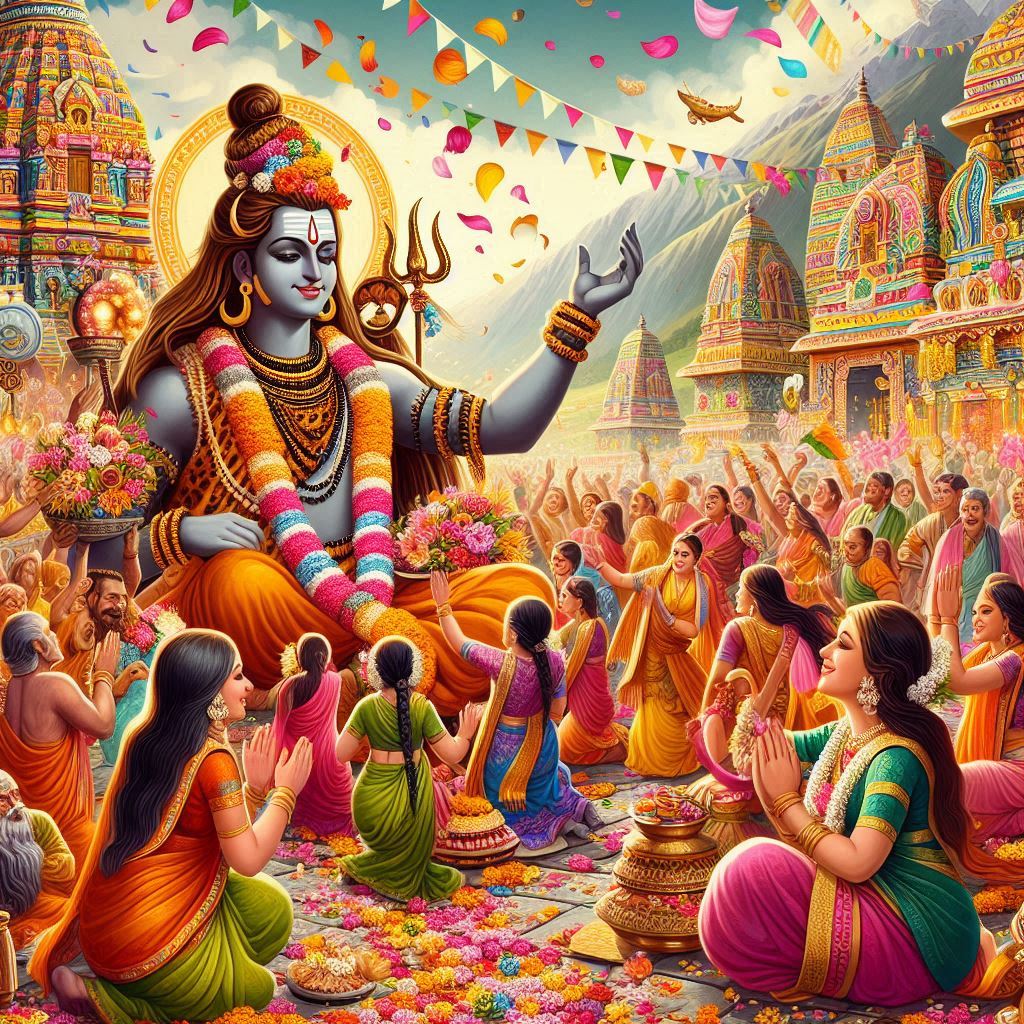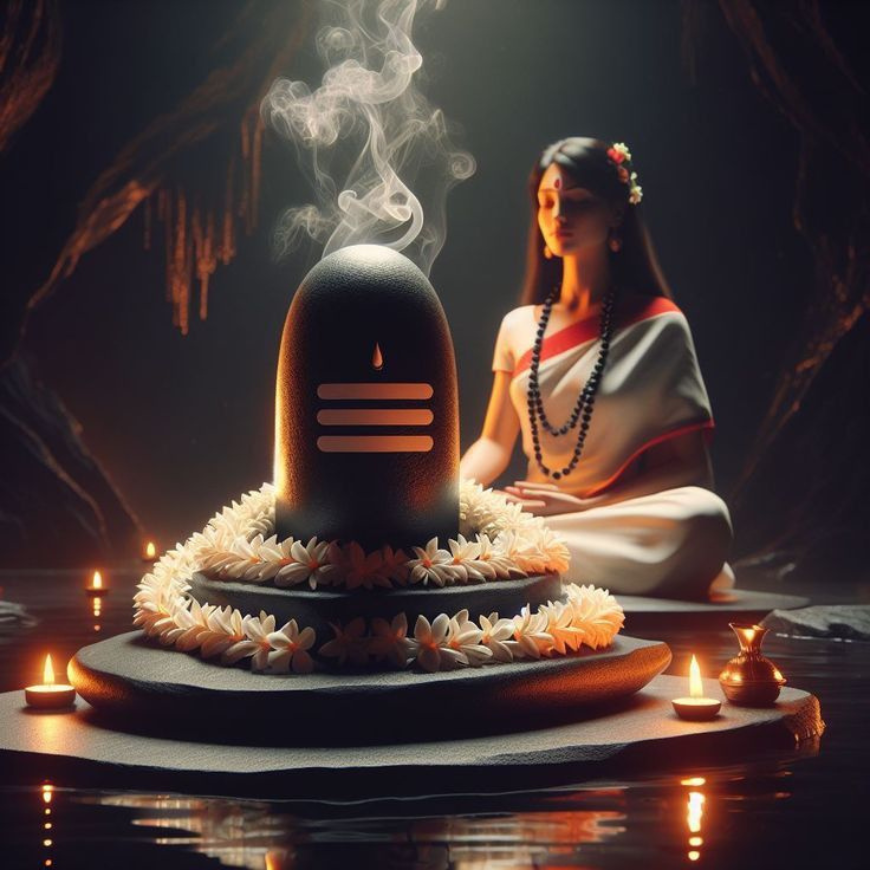Lord Shiva, the “Auspicious One,” is one of the most complex and fascinating deities in the Hindu pantheon. He is often called “Mahadeva” (Great God) and is part of the Trimurti (Hindu Trinity) alongside Brahma (the creator) and Vishnu (the preserver), with Shiva representing the aspect of destruction and transformation. His stories and legends are rich with symbolism, paradox, and profound spiritual wisdom.
Here are some of the most popular and significant Shiva stories and legends:
1. The Samudra Manthan (The Churning of the Cosmic Ocean): This is perhaps one of the most iconic stories. Gods (Devas) and demons (Asuras) collaborated to churn the cosmic ocean to obtain the elixir of immortality (Amrit). During the churning, a deadly poison called Halahala emerged, threatening to destroy all creation. No one could bear its potency. Lord Shiva, out of immense compassion for the universe, drank the poison. Goddess Parvati quickly grasped his throat to prevent the poison from descending to his stomach and harming his body. The poison remained in his throat, turning it blue. This is why Shiva is known as Neelkanth (Blue-Throated). This story highlights Shiva’s selfless nature and his role as a universal savior.
2. The Birth of Ganesha: This beloved tale explains how Lord Ganesha came to be. While Shiva was away, Goddess Parvati, feeling lonely and desiring a protector, created a boy from the dirt and sweat of her body and breathed life into him. She instructed him to guard the entrance while she bathed. When Lord Shiva returned, Ganesha, not recognizing him, obstructed his path. Enraged by this unknown boy’s defiance, Shiva, in a fit of fury, severed Ganesha’s head. Parvati was heartbroken and revealed that Ganesha was her son. To pacify her, Shiva commanded his ganas (attendants) to bring the head of the first living creature they encountered that was facing north. They found an elephant’s head, which Shiva then affixed to Ganesha’s body, bringing him back to life. Ganesha was then proclaimed the chief of the ganas and received the boon that he would be worshipped first in all rituals.
3. Daksha Yagna and Sati’s Sacrifice: Sati was Lord Shiva’s first wife, the daughter of Prajapati Daksha. Daksha, proud and arrogant, harbored a strong dislike for Shiva, whom he considered an uncouth ascetic. He organized a grand Yagna (fire sacrifice) and deliberately excluded Shiva and Sati. Despite Shiva’s advice not to go uninvited, Sati, out of love for her parents and a desire to attend, went to the Yagna. There, Daksha publicly insulted Shiva. Unable to bear the disrespect shown to her beloved husband, Sati immolated herself in the sacrificial fire, giving up her life as a protest against her father’s arrogance. A distraught and enraged Shiva arrived, taking on his fierce form of Virabhadra. He destroyed Daksha’s Yagna and eventually brought Daksha back to life, but only after replacing his head with that of a goat, as a lesson in humility.
4. Shiva’s Tandava and Nataraja: Shiva is renowned as the Lord of Dance (Nataraja). His cosmic dance, the Tandava, is a vigorous and dynamic dance that signifies the cosmic cycles of creation, preservation, and dissolution. It represents the five manifestations of eternal energy: Srishti (creation), Sthiti (preservation), Samhara (destruction), Tirobhava (illusion), and Anugraha (release/salvation). When Shiva performs his destructive Tandava, it signals the end of a cosmic cycle, making way for new creation. The Nataraja icon depicts Shiva dancing within a circle of flames, crushing the demon Apasmara (symbolizing ignorance) under his foot, signifying that ignorance is overcome by divine knowledge.
5. The Descent of Ganga (Gangadhara): King Bhagiratha performed severe penance for thousands of years to bring the sacred River Ganga down to Earth to purify the ashes of his ancestors and grant them salvation. However, the mighty force of Ganga’s descent was so immense that it threatened to shatter the Earth. Bhagiratha prayed to Lord Shiva, who agreed to break Ganga’s fall. Shiva received Ganga in his matted locks (Jata) and released her gently onto the Earth in several streams. This act saved the Earth from devastation, and Shiva gained the epithet Gangadhara (Bearer of Ganga).
6. Shiva and the Burning of Kama (Kamadev): After Sati’s sacrifice, Shiva retreated into deep meditation and severe asceticism. The gods needed Shiva to marry Parvati (Sati’s reincarnation) to produce a son who would defeat the formidable demon Tarakasura. To break Shiva’s meditation, they sent Kamadev, the god of love, to strike Shiva with his arrow of desire. When Kamadev shot his arrow, Shiva’s meditation was disturbed. In a fit of immense anger, Shiva opened his third eye (located on his forehead), and the powerful fiery gaze reduced Kamadev to ashes. This story signifies Shiva’s mastery over desire and his ascetic power. Later, Kama was resurrected by Rati (Kama’s wife) and reborn as Pradyumna, Krishna’s son.
These stories, among many others, illustrate the multifaceted nature of Lord Shiva: he is the ultimate ascetic and the loving householder, the destroyer of evil and the bestower of boons, the fearsome Rudra and the compassionate Bholenath (innocent one). His legends offer profound insights into the cycles of life, death, and rebirth, the importance of devotion, and the path to spiritual liberation.



